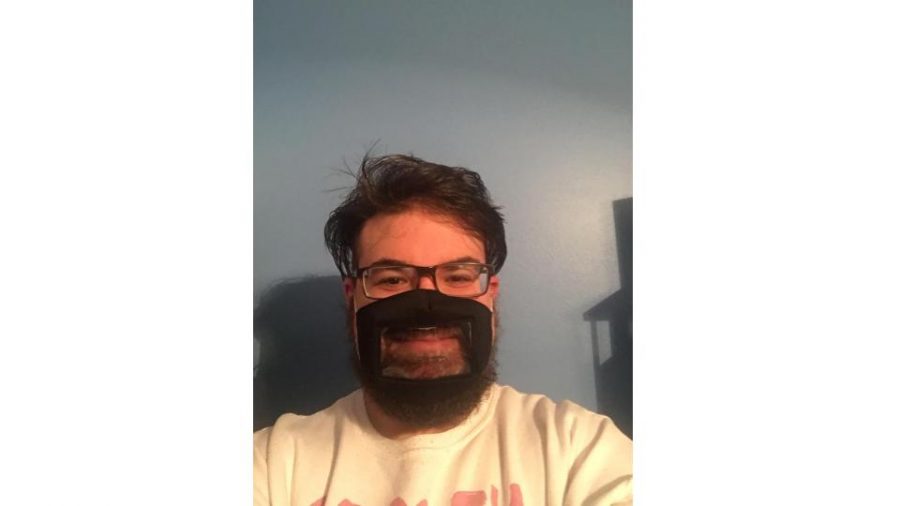
Special Education Teacher Zack Jodlowski poses for a picture wearing his mask.
Zack Jodlowski
Born to Deaf parents with sign language as his first language, Zack Jodlowski is a Special Education teacher for the Deaf and Hard of Hearing Department. Jodlowski was born hard-of-hearing, though he identifies as culturally Deaf.
“[Being Deaf] has made it hard for me to interact with hearing people. If I don’t understand what they’re saying, it’s tricky for me to say I couldn’t hear you, because oftentimes deafness is associated with people who sign or people who don’t tend to talk,” Jodlowski said. “If they see someone who talked, who says, you know I can’t hear you, they’re less likely to believe that that person is actually deaf or actually having a hard time hearing, so I get a lot more frustration I think just because I tend to pass as hearing versus deaf, but that has generally been my biggest struggle, just communicating with people and understanding what they’re saying, without the use of sign language.”
American Sign Language, or ASL, relies both on hand movements and facial expressions for full communication. Masks have limited this method of communication for ASL speakers.
“Even talking with people who know sign language is very hard in itself, and so that aside, interacting with hearing people has been even tougher, because without having those mouth cues to give little head for what is being said, I completely get lost, because now I’m only catching probably about 40% to 50% of what is being said, so I don’t get a full message when people are wearing a mask,” Jodlowski said.
Jodlowski has relied on a variety of methods to adapt to a new learning environment involving both masks and virtual students, including the help of interpreters.
“[Communicating in masks] has been harder for [students who rely more on oral communication] and for me to understand each other and so we use a lot more strategies to figure out what the other person is saying. I’ve had to be innovative with pulling interpreters to interpret for students who are joining virtually, so they get the full visual aspect of all that facial grammar,” Jodlowski said. “But you know, I think it’s just like any other teacher when these roadblocks have come up, we just tackle them head-on and figure out what to do and to go from that.”
Jodlowski has faced challenges with how others respond to his hearing disability. People will often pull their masks down in an attempt to help with communication.
“I’ve seen a wide range of responses, but typically the first thing people do is they pull down their mask so the person can lip read. For me, I am not comfortable with that but there are other people who are,” Jodlowski said. “My advice would be to gesture first, and be like, are you okay with me pulling down my mask to lip read or whatever.”
Jodlowski has used the app Big to help with communication. This app is similar to the Notes app on iPhones, as white text is typed onto a black background and up to 20 phrases can be saved for easier communication, and others can respond by typing a message onto the app.
“I’d type on my phone and show what I’m trying to say. I think another thing that’s important is just to make sure you ask what the communication preferences of the person are in regards to masks,” Jodlowski said. The Deaf and hard-of-hearing community is made up of a wide range of people. Jodlowski wants people to know that every member is unique in terms of the severity of their hearing disability and how they communicate with others.
“I think the most important thing for people to know is it’s not one size fits all. But it’s really important to ask and respect the identity of the deaf or hard-of-hearing person that you are talking with. If you are meeting with a deaf person or hard of hearing person for the first time that should probably be your first question,” Jodlowski said. “Typically, it’s not an offensive question, it just helps you to know their communication preferences and how they identify, and then you can just go from there.”
